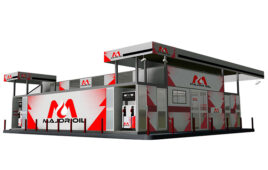As bakery offerings continue to grow in c-stores, it’s crucial to know what types of products consumers are opting for and how trends are progressing. What’s in Store 2010, the recently released annual trends report from the International Dairy•Deli•Bakery Association (IDDBA), offers a clear look at consumer activity in the bakery sector.
The report showed unpredictable commodity prices are affecting bakery prices and as a result, consumers are turning to store brand breads and bakery items but, at they same time, consumers still crave value-added products, and indulgent and portion-controlled items.
Many bakery operators feel commodity prices will never recede to the lower prices of years ago. According to the USDA Economic Research Service, bakery product prices increased 6% in 2008 and are expected to jump another 2% in 2009. Because of price, 61.2% customers are purchasing store brand bakery items, according to IDDBA original research. In response, bakery operators are attempting to maintain or increase quality at a fair price and to make the department a destination with unique products.
Most consumers say that they won’t pay extra for healthful bakery items, according to original IDDBA research. Among those who will, whole-grain products top of the list of specialty products deemed “worth the extra cost.” Bakery consumers also say they want products that are locally produced, healthful, all-natural, and organic-but only if they don’t have to pay a premium. Whole grain products are near the top as far as new product introductions in the bakery industry, and grains other than wheat-like oats, barley, and sorghum-are appearing more on ingredient lists.
Operators are reporting more interest in single-slice cakes and pies, muffins and cupcakes. Retailers’ bite-sized offerings include pastries, cookies, Danishes, brownies, cheesecakes and even mini-wedding cakes. Perishables Group noted that a potential target is the consumer who shops the center store for 100-calorie snack packs. Mintel suggests cross-merchandising bakery products with specialty coffees or wines to accommodate adults’ desire for a special treat.
Gluten-free products continues to grow in the bakery sector. Mintel reported that new product introductions in the gluten-free category increased from 577 in 2004 to 2,793 in 2008. An April 2009 Packaged Facts report, Gluten Free Food & Beverage, noted the market size was $1.56 billion with a compound annual growth rate of 28% from 2004 to 2008. These products are sought not only by those with medical conditions requiring a life-long adherence to a gluten-free diet but also by consumers who believe that a gluten-free diet is more healthful.
Cupcakes continue to enjoy popularity and lend themselves to creative merchandising. Metal or plastic cupcake trees showcasing individually wrapped cupcakes in a portable display can be moved to high traffic areas for impulse purchases. Cupcake kits also received a lot of attention at the Dairy-Deli-Bake show. Retailers package the components and let the customer have fun doing the decorating at home.
According to Mintel, cookies have embraced healthfulness by using whole grains, organic ingredients, fruits and nuts with antioxidants, and lesser evil ingredients, as well as recipes targeting vegan, kosher, and gluten-free markets. Mintel analysts refer to cookies’ “unusual flexibility” in incorporating more healthful ingredients as a reason for the category’s success.
What’s in Store 2010 details consumer and industry trends affecting the dairy case, cheese case, bakery, and deli/foodservice departments. Its 165 tables, developed in cooperation with leading industry firms and associations, include department sales, per capita consumption, consumer preferences, and random-weight, UPC, and private label sales data.
The full report is available from IDDBA. For more information, visit the organization’s Web site, www.iddba.org.




